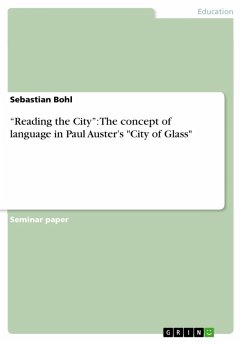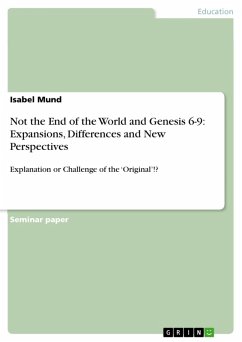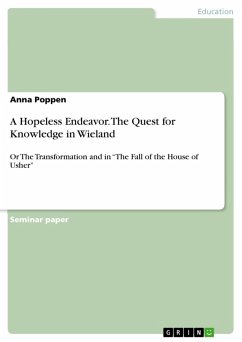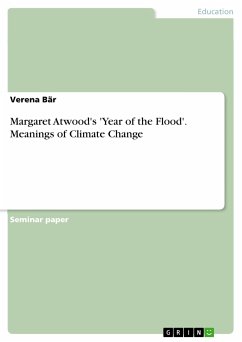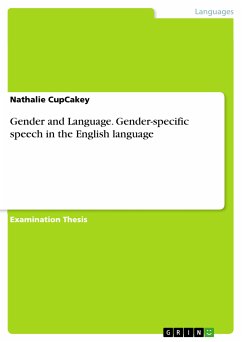
Gender and Language. Gender-specific speech in the English language (eBook, PDF)

PAYBACK Punkte
0 °P sammeln!
Examination Thesis from the year 2012 in the subject Didactics for the subject English - Literature, Works, grade: 78/100, University of Southampton, language: English, abstract: Gender-specific speech in the English language Apparently women talk three times as much as men. This is something one half of the population has long suspected while the other half always vocally denied it. But what about the contents? Men and women are also believed to be unable to communicate, so do they really share the same language? Some say that this is not just a myth. It is a common belief that there lies tru...
Examination Thesis from the year 2012 in the subject Didactics for the subject English - Literature, Works, grade: 78/100, University of Southampton, language: English, abstract: Gender-specific speech in the English language Apparently women talk three times as much as men. This is something one half of the population has long suspected while the other half always vocally denied it. But what about the contents? Men and women are also believed to be unable to communicate, so do they really share the same language? Some say that this is not just a myth. It is a common belief that there lies truth in these legends of having different ways of expressing one's wants and needs. People have always been interested in the topic but since the late 20s century literature on the topic has started blooming. It is not only books that kept appearing and ended up on the best-seller lists, but also seminars were advertised, as well as telephone helplines and even dating websites are not a taboo anymore, all of them with the common aim of helping genders sort out their misunderstandings. In this paper I will focus on aspects and more precisely the differences in male and female talk to show how analysing speech acts can reveal hidden truths about the genders and their communication habits. As Deborah Cameron states in her book (2009) it is still a matter of research to know where the origins of language lie. At the same time arises the question of gender-related particularities within the language used by both sex. The latter also entails various theorists to argue upon the origin of language as originated in men (case bolstered by e.g. Crow,1998), while others believe that it first appeared in women (e.g. Dunbar,1996). Cameron also explains how language serves the purpose of creating and maintaining the cohesion within a social group. Therefore she refers to Robin Dunbar, who says that linguistic exchange plays the same role as grooming does for primates. With the increase in size of pre-historic human groups, language became necessary in order to exchange information and improve relationships between the members of the group. Language was born. Henceforth throughout history, language has evolved and can be analysed according to two categories: one which focusses on male language, the other one on female language.
Dieser Download kann aus rechtlichen Gründen nur mit Rechnungsadresse in A, B, BG, CY, CZ, D, DK, EW, E, FIN, F, GR, HR, H, IRL, I, LT, L, LR, M, NL, PL, P, R, S, SLO, SK ausgeliefert werden.




